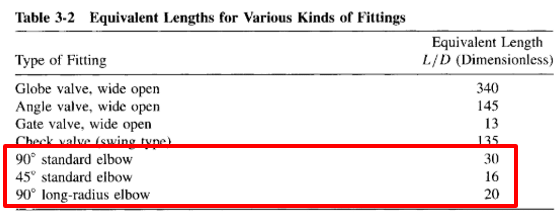I was confused by the resistance coefficients in Crane.
For standard elbows K=30ft while K=20ft(r/d=1) for flanged or butt-welding 90° elbows.
There is no any note about standard elbows in Crane.
Why there is big difference between standard elbows and others? and what's standard elbow?
Thanks in advance.
For standard elbows K=30ft while K=20ft(r/d=1) for flanged or butt-welding 90° elbows.
There is no any note about standard elbows in Crane.
Why there is big difference between standard elbows and others? and what's standard elbow?
Thanks in advance.

